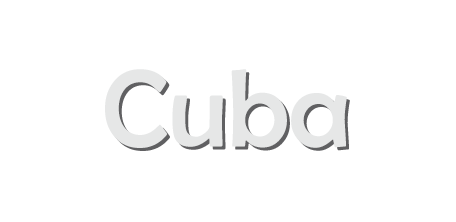
Cuba is the first thing that comes to mind when you think of cigars, radical politics, social strife and Fidel Castro? Officially known as the Republic of Cuba, it is known as the Pearl of the Caribbean and is a wonderful place for holidays. Christopher Columbus was the first Spanish traveller and explorer to land on its shore in 1492. Isolated from the capitalist world, this beautiful country has preserved its unique identity and character. More than the sun, sea and the beaches, it is the unspoiled nature, wildlife and an interest in the culture and traditions of its inhabitants that makes Cuba a preferred destination for a visit. In spite of facing many difficulties and shortages in their homeland, the Cubans still remain friendly and cheerful. Cuba presents an opportunity to experience both the contrasting representations of modernity and traditional values as well as the urban and rural splendor. With the exotic Havana as its capital city, Cuba is the biggest island in the Caribbean. Let us learn more about Cuba, a vibrant place of passionate people.
Located in the Caribbean, Cuba is an island country between the Caribbean Sea and North Atlantic Ocean lying 150 km south of Key West, Florida. Covering a total area of about 110,860 sq. km, land occupies about 109,820 sq. km and water occupies about 1,040 sq. km. It lies between the geographic coordinates 21°30’ N latitude and 80° W longitudes. It borders the US Naval Base at Guantanamo Bay (28.5 km). Stretching a coastline of about 3,735 km, it is slightly smaller than Pennsylvania and comparatively ranks 106th in the world.
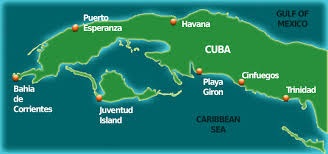
Cuba enjoys a tropical climate which is moderated by north–east trade winds. There is a dry season from the months of November–April and a rainy season from the months of May–October. The average annual temperatures range from about 21°C in January to 27°C in July. The terrain is mostly flat to rolling plains with rugged hills and mountains in the south– east. The lowest point of elevation is at the Caribbean Sea at 0 m while the highest point is Pico Turquino at 2,005 m. The available natural resources are cobalt, nickel, iron ore, chromium, copper, salt, timber, silica, petroleum and arable land. Natural hazards such as hurricanes lash the east coast from August–November and droughts are common. Loss of biodiversity, deforestation and air and water pollution are the environmental issues faced by Cuba.
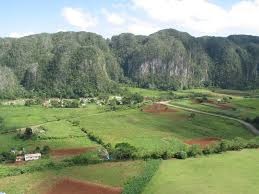
The island country of Cuba boasts a number of orchids and plants. Trees such as mahogany, oak, cedar, flamboyant trees, fig tree, ebony, walnut, palm tree, ceiba, sea grape and Royal Poinciana and flowering plants such as la mariposa and magnolia grow here. The fauna includes land mammals such as the greater bulldog bat, Cuban solenodon, small Indian mongoose, Cuban hutia and pallid bat. Along with a number of mosquitoes, reptiles and amphibians such as crocodile, iguana, boa, tree frog, Monte Iberia dwarf eleuth, tarantula and night lizards along with the species of birds such as the Cuban finch, kite, parakeet, Bee hummingbird and Cuban trogon are found here. Tropical fish such as the puffer fish, pig fish, trigger fish, bat fish and a variety of Gar and species of dolphins such as Clymene, Striped, Fraser’s, Risso’s and Spinner are found in its territorial waters.
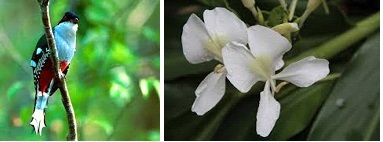
For many years, the Cubans have been struggling with two systems of governance namely Socialism and Capitalism. The institution of marriage has suffered due to the rising status of women and growing resentment of men. Liberation of women and irresponsibility of men has resulted into increased number of households with single mothers. Men go out in search of work and extramarital recreations. Domestic units are defined around women. Children are taught Socialist values from early childcare centres. Being generous and hospitable is highly valued and visitors are always welcomed. Cubans complain and argue a lot and view it as a means to relieve tension. The social norm is to minimize an open conflict and adopt more subtle ways to express interpersonal conflict. Men greet each other with a handshake while women may kiss on the cheeks. Popular music and dance forms such as salsa, rumba, cha cha cha have their roots in Cuba.

The official language of Cuba is Spanish, spoken by a majority of the Cubans along with Lucumi and Creole as the other local dialects. Roman Catholicism is the main religion practiced by most of the population, followed by small minority groups of Protestants, Jehovah’s Witness, Jews, Muslims and the members of Baha’i faith and Santerias.
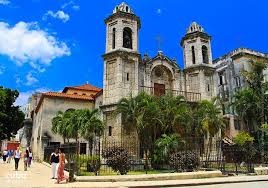
Cuban cuisine is a blend of the Native American Taino food, the Spanish, African and Caribbean cuisines. Daily diet of the Cubans is simple and is made up of rice, beans, fried plantain, tubers, vegetables and cucumbers. Breakfast consists of a tostada and cafe con leche while lunch may be empanadas, chicken or meat turnovers or Cuban sandwiches. Dinner will consist of meat, chicken and fish accompanied by rice, beans and plantains. Pork and chicken have taken over beef as a more economical alternative. Low quality ham called jamon vikin is made from pork but beef is unavailable to the city residents. ‘Arroz congri oriental’ is a favourite dish along with Ropa vieja, Boliche and sofrito. Much of the Cuban cooking is based on a few spices such as garlic, cumin, oregano and bay leaf. Sofrito is used as a base which consists of onion, green pepper, garlic, oregano and ground pepper fried in olive oil. It imparts flavour to the food. Meat and poultry are marinated in citrus juices and roasted over low heat until tender. Cubans are fond of sweets. Cakes and ice creams are a special treat as well as a national obsession on all special occasions. Mojito is a favourite drink of the Cubans made from white rum, sugar, sugar cane juice, lime juice, water and spearmint.
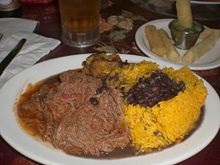
The Cuban government strives to create a balance between the need for loosening of the socialist economic system and a firm political control with recent reforms. Despite these reforms, the standard of living of an average Cuban remains low due to other international factors. The agricultural products of Cuba are sugar, tobacco, citrus, coffee, rice, potatoes, beans and livestock. Industries which contribute to development include petroleum, nickel, cobalt, pharmaceuticals, tobacco, construction, steel, cement, agriculture, machinery and sugar. It exports petroleum, nickel, medical products, sugar, tobacco, citrus, fish and coffee to Canada, China, Venezuela, Spain and Netherlands whereas the imports of Cuba include petroleum, food, machinery equipments and chemicals from Venezuela, China, Spain and Canada.



